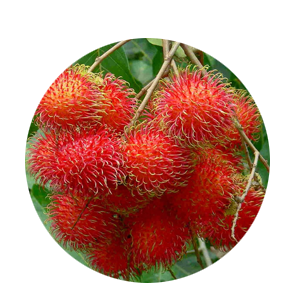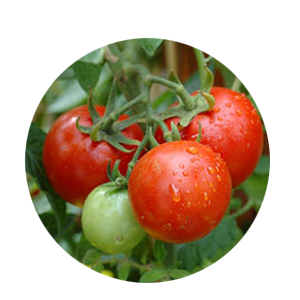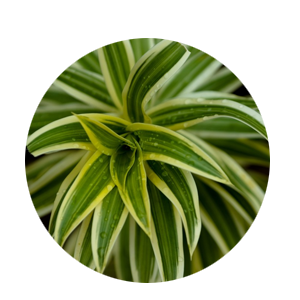Kudampuli -Grafted - (5x7 bag)

Item Description
GENERAL INFORMATION ABOUT A MALABAR TAMARIND Garcinia gummi-gutta is a tropical species of Garcinia native to Indonesia. Common names include Garcinia cambogia (a former scientific name), as well as brindleberry, Malabar tamarind,and kudam puli (pot tamarind). This fruit looks like a small pumpkin and is green to pale yellow in color. Malabar Tamarind is one of several closely related Garcinia species from the plant family Clusiaceae. With thin skin and deep vertical lobes, the fruit of Malabar tamarind and related species range from about the size of an orange to that of a grapefruit; Malabar tamarind looks more like a small yellowish, greenish, or sometimes reddish pumpkin. The color can vary considerably. When the rinds are dried and cured in preparation for storage and extraction, they are dark brown or black in color. Tamarind is used commercially in fish curing, especially in Sri Lanka and South India.[citation needed] The trees can be found in forested areas and also are protected in plantations otherwise given over to pepper, spice, and coffee production. HEALTH BENEFITS OF MALABAR TAMARIND The fruit rind contains the chemical hydroxycitric acid (HCA) and is used to make medicine. Don\\\'t confuse Garcinia with Garcinia hanburyi (gamboge resin). People take Garcinia by mouth for weight loss, exercise performance, joint pain, bloody diarrhea, to increase bowel movements, and for treating worms and parasites. Some health benefits of Malabar tamarind 1.Lowering of blood pressure 2.Anti-inflammatory properties 3.Anti-microbial 4. promote skin regeneration 5.Strengthening of bones 6.Cancer disease 7.Treatment of flu and coughs 8.Alleviates allergies 9.Treatment of arthritis 10.reduce stress 11.fight depression 12.ower cholesterol, 13.regulate blood sugar 14.increase metabolism 15.boost energy levels
Maintanance, Disease Management And Yielding
MAINTANACE OF THE PLANTATION Once a plantation has been established, the work should not be considered finished. It will be necessary, for example, to protect the plantation against weather, fire, insects and fungi, and animals. A variety of cultural treatments also may be required to meet the purpose of the plantation. FERTILIZING Apply 10 kg cattle manure or compost per seedling / graft during the first year. Gradually increase the quantity so that a well-grown tree of 15 years and above receives 50 kg of organic manure per year. Apply N:P2O5:K2O mixture at the rate of 20:18:50 g/plant during the first year. Double the dose in the second year and gradually increase it to 500:250:1000 g / plant / year at the 15th year. WATERING AND WEED CONTROL Young Malabar Tamarind trees should be watered regularly until fully established. In dry western climates, water mature trees deeply at least every one or two weeks. Desert gardeners may have to water more frequently. Mulch the soil around the trees to conserve moisture. Weeding is also very important. Remove all weeds 1.5 meter around the plant. PRUNING AND SHAPE OF TREE Little pruning is required apart from removing overlapping or dead branches or to limit tree size for easier harvesting and spraying. PEST & DISEASE Every fruit tree has the future potential for disease and insect damage. Factors such as location and weather will play a part in which issues your tree encounters. If available, disease-resistant trees are the best option for easy care; and for all trees, proper maintenance (such as watering, fertilizing, pruning, spraying, weeding, and fall cleanup) can help keep most insects and diseases at bay. HARVESTING YOUR MALABAR TAMARIND TREE Seedlings start bearing generally at the age of 10-12 years. Grafts start bearing from the third year onwards and will attain full bearing at the age of 12 to 15 years. Flowering occurs in January-March and fruits mature in July.Mature fruits, which are orange yellow in colour, drop off from the tree. Harvest mature fruits manually before they fall. Immediately after harvest, wash the fruits in running water and separate the fruit rind for processing.
- Propogation Method : Grafting
- Plant Climate : Sub Tropical, Normal, Cool, Tropical
- Plant Height : 1-2 feet
- Plant Weight : 1 Kg
- Plant Polybagsize : 5x7
Related Images
- Botanical Name : Garcinia gummi-Gutta
- Malayalam Name : Kudampuli
- English Name : Malabal Tumerind/ Brindleberry
Malabar Tamarind as one of the most useful parts of the fruit for medicinal use
Planting Instructions
PLANT THE RIGHT TREE AT RIGHT PLACE Growing space both above and below ground should be considered when selecting a tree to plant. Too often allowances are not made for the increased size of the tree when it matures. Most problems can be avoided by selecting the proper tree species for the available planting space. GENERAL TIPS 1. Plant at least 3 meter from main overhead utility wires on street or to your home. 2. Plant at least 3 meter from a building. 3. Plant at leat 1 meter from sidewalks, driveways, patios and fences. 4. Plant at least 6 meter from other large trees. 5. Plant at least 3 meter from small trees. 6. Prioritize your tree planting with the sun’s direction to maximize shade by planting on the southwestern and western sides of your home BASIC PARAMETERS TO PLANT A MALABAR TAMARIND TREE 1.Soil :It grows well in dry or occasionally water logged or flooded soils. 2.Planting Distance : For Commercial Plantation:- The planting distance of 7 meter x 7 meter is recommended For Home Garden:-In a home garden generally we are planting one or two Malabar Tamarind trees along with other species of fruit plants. So it is better to keep minimum 3 meter distance from other plants to plant a Malabar Tamarind tree. 3. Pit size : Minimum 60cm width X 60cm Breadth X 60cm depth 4. Sunlight : 100% sunlight is best but can grow up to 50 % shade 5. Watering: During dry weather, initially water the plant once in two days and after one month of planting water every 7 to 10 days during the first year. TEN TIPS FOR PLANTING A MALABAR TAMARIND TREE 1. Dig a hole/pit 3 to 4 times wider than the container (Normally 60cm X 60cm X 60cm is recommended). Fill the pit with top fertile soil to allow for proper root growth. Avoid clay type soil to refill the pit. 2. Add 250 gm Rock Phosphate or Born Meal and 3 to 5 kg Cow dung or compost in the top soil of the pit and mix it thoroughly (Thorough mixing of manure with soil is very important because direct contact of manure with the roots of the plant will cause the damage of roots and plant). 3. Make a small hole in the pit and carefully remove the plant from the container/pot or poly bag keeping the soil around the roots intact. Don‘t yank the plant out of the pot or poly bag as this can separate the roots from the tree. Poly bags can be easily removed by cutting it by a knife and pots can be removed easily by hitting slightly at the top edge of the pot. 4. Set the plant in the middle of the hole. Avoid planting the tree too deep. Keep the base of the trunk is slightly above ground level. Using some soil, secure the tree in a straight position, then fill and firmly pack the hole with the original soil, making sure there aren‘t any air pockets. 5. If the plant is Grafted or Budded make sure the grafted or budded portion of the plant is above the soil. Do not allow to touch the grafted or budded portion in the soil as it burns the skin of the plant. 6. Create a water-holding basin around the pit and give the plant a good watering. After the water has soaked in, spread protective mulch 2–4 inches deep in a 3-foot diameter area around the base of the tree, but not touching the trunk. Also provide a stich as a support for the plant, if needed. 7. The soil and mulch around your plant should be kept moist but not soggy. During dry weather, initially water the plant once in two days and after one month of planting water every 7 to 10 days during the first year. 8. Remove any tags and labels from the tree as these will affect the tree as it grows. You may need to prune any broken or dead branches. For Budded or Grafted plants it is very important that do not allow the growth of off shoots under the grafted/budded portion. Allow the growth of budded/grafted scions only. 9. Do not use chemical fertilizer or any other chemicals on your newly planted trees. Such products will kill your young trees. If needed you can add chemical fertilizers in small quantity (generally below 100gm) after two to three months of planting with sufficient irrigation. 10. Do not over water or allow rain water so much that you see standing water in the pit area of the plant. It will damage the plants roots and results the die of your plant.

















